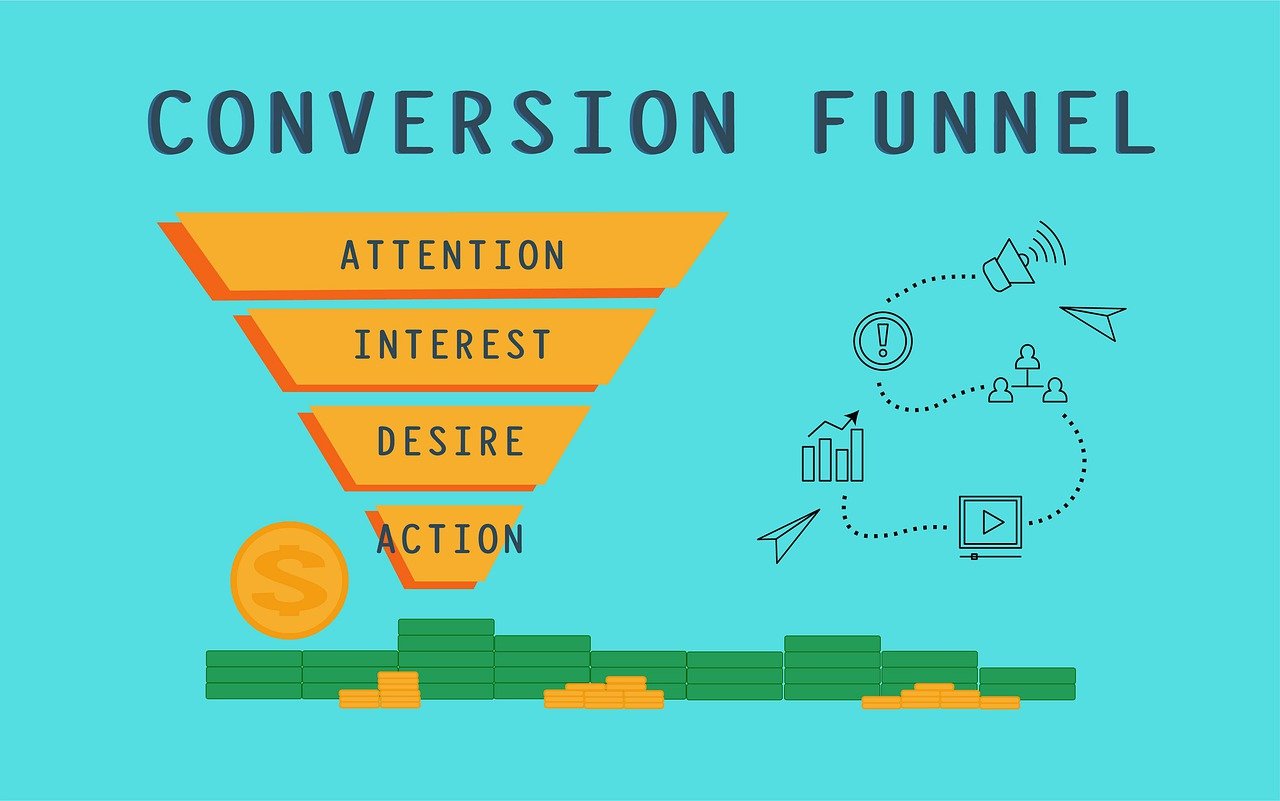You know that frustrating feeling where you put your sweat and effort into social media, maybe run some ads, get people clicking, the traffic comes, they hang around, but then they vanish after a while. Those potential customers leaking away are why you need a sales funnel.
It's a smarter way of guiding people who might be interested in actually buying something from you.
So what is a sales funnel?
This is the step-by-step journey someone takes from discovering your business exists to becoming a paying customer. It is called a funnel because typically, many people enter at the top (awareness), while fewer move down to the middle (consider you seriously), and even fewer make it to the bottom (purchasing). The goal is to provide adequate information and support at the right time so that genuinely interested people can feel good about choosing your business.
Building a sales funnel feels less overwhelming when you break it down stage by stage. Here’s how it works practically;
Getting on Their Radar (The Top)
This is where strangers become aware of you. They have a problem or a desire, and they’re looking for solutions. Your job here is simply to be visible where they are searching or hanging out.
Suppose your goal here is to capture attention and offer something genuinely worthwhile. Create valuable, free content that addresses their initial questions or pain points. Blog posts, helpful social media videos (such as TikTok, Instagram Reels, or YouTube Shorts), informative podcasts, or even well-placed ads targeting broad interests are all suitable options. The focus is to do more education or entertainment rather than a hard sell.
Turning Curiosity into Engagement (Narrowing down)
Okay, someone noticed you. Now you need them to raise their hand and say, "Tell me more." This is where you initiate a conversation, and the goal is to convert anonymous visitors into known leads with whom you can communicate. What you can do is to offer a compelling lead magnet, something valuable in exchange for their contact info, usually an email address.
This could be a detailed guide, a checklist, a free mini-course, a discount code, or exclusive access to content. The key is relevance, so it must directly relate to the problem you solved in the awareness stage. Drive traffic to a dedicated landing page focused solely on this exchange.
Warming Them Up to Buy (The middle)
Since you have their contact information, this is not the time to bombard them with "BUY NOW!" emails. That’s a quick path to the unsubscribe button. This stage is about building trust and demonstrating the value of your solution. The goal is to position yourself as the best solution and overcome buying hesitations.
What you can do is nurture your leads via email (or targeted social ads). Share more valuable content: case studies showing real results, testimonials from happy customers, detailed comparisons explaining why your offer stands out, or even a free webinar demonstrating your expertise. Address potential objections proactively. This is the "know, like, and trust" phase.
Closing the Deal (The Narrow Bottom)
They’re interested, they’re informed, and they trust you. Now it’s time to make the ask clear and straightforward. Once again, the goal here is to convert leads into paying customers. The key to this is to present your core offer (product, service, or subscription) with a strong, clear call to action. Your sales page needs to eliminate all friction, offer easy navigation, feature compelling copy that highlights benefits over features, display transparent pricing, and have a seamless checkout process. Limited-time offers or bonuses can provide that final nudge.
How to Build a Sales Funnel
Let's put all of these steps into a local context. A founder in Harare, building PennySmart, a mobile app that helps young Zimbabweans track spending, set savings goals, and get personalised money tips.
Here’s how PennySmart can apply the sales funnel:
1. Awareness
PennySmart runs short, relatable Instagram Reels and Twitter posts showing people saying things like, “Where did my money go this month?” or “I finally saved $500 in 3 months.” These posts spark curiosity and get people to notice the app.
2. Interest
Anyone who clicks on the post is directed to a simple page that reads, “Take control of your money without the stress.” The page highlights how the app works, showcases testimonials from real users, and offers a quick quiz to assess spending habits.
3. Consideration
At the end of the quiz, they ask for your email to send your “Money Score” and savings plan. Now, PennySmart can follow up with short, friendly emails that share tips, money-saving challenges, and stories of people who have transformed their finances using the app.
4. Decision
A few days later, PennySmart sends a nudge: “Ready to start saving smarter? Download the app and get $5 in your savings wallet after signing up.” That bonus gives people a reason to act now, and the signup process is quick.
5. Loyalty
Once someone starts using the app, they get weekly nudges to stay on track, surprise rewards for hitting their savings goals, and a referral bonus when they invite a friend. The app remains helpful and fun, so people continue to come back.
Building a sales funnel requires upfront effort, but it replaces random hope with a reliable system. It stops the leaks. You stop shouting and start having structured conversations that guide interested people towards a solution you provide. Select tools that align with your budget and technical comfort level. Start simple, track your results (analytics are non-negotiable!), and refine them constantly. The path from stranger to customer becomes clear, intentional, and ultimately, profitable. Time to build your path.
Your next read: The Startup's Guide to Building a Growth Team



